In our "Focused Firms" series, we looked at how single-practice law firms are doing in terms of demand and efficiency — now we get to the big issue: Profit
In the previous two editions of this series we have so far established that i) what we are calling our Focused Firms enjoyed higher demand growth in 2019; and ii) they completed that increased volume of work more efficiently based on hours worked per lawyer.
All of that is well and good, but at the end of the day one giant burning question remains: Are our Focused Firms more profitable?
The Top Line
Beginning with the top line, revenue represents an interesting conundrum. As we previously showed, more than half of our Focused Firms group consisted of midsize firms, or firms outside of the Am Law 200. This is readily apparent when comparing average total revenue between the two groups: The average Focused Firm took home $283,640,307 dollars in 2019, while the average among firms outside of that group was significantly greater at $394,409,198. This a more than $100 million-dollar revenue gap that was entirely attributable to firm sample, with the group of non-focused firms consisting of a much higher proportion of firms in the Am Law 100 and Am Law Second Hundred as compared to our Focused Firms group.
Despite the smaller average total revenue, revenue growth tells a different tale and is much more in line with what was reflected in our demand figures. Average revenue growth in our Focused Firm group did outpace all other firms, 5.0% to 4.7% respectively. Further, on a per-lawyer basis, once again our Focused Firms reigned supreme. Average revenue per lawyer was more than $100,000 greater among Focused Firms, at $880,826, than across all other firms, with $767,211.
Considering all of this and despite their smaller size on average, when looking at the top line it is abundantly clear that firms with more of a singular focus are increasing their revenue at a greater pace and doing so more efficiently on a per lawyer basis when compared to the rest of the market. At this point, the Focused Firms find themselves halfway to pay dirt; however, there are still expenditures to consider.
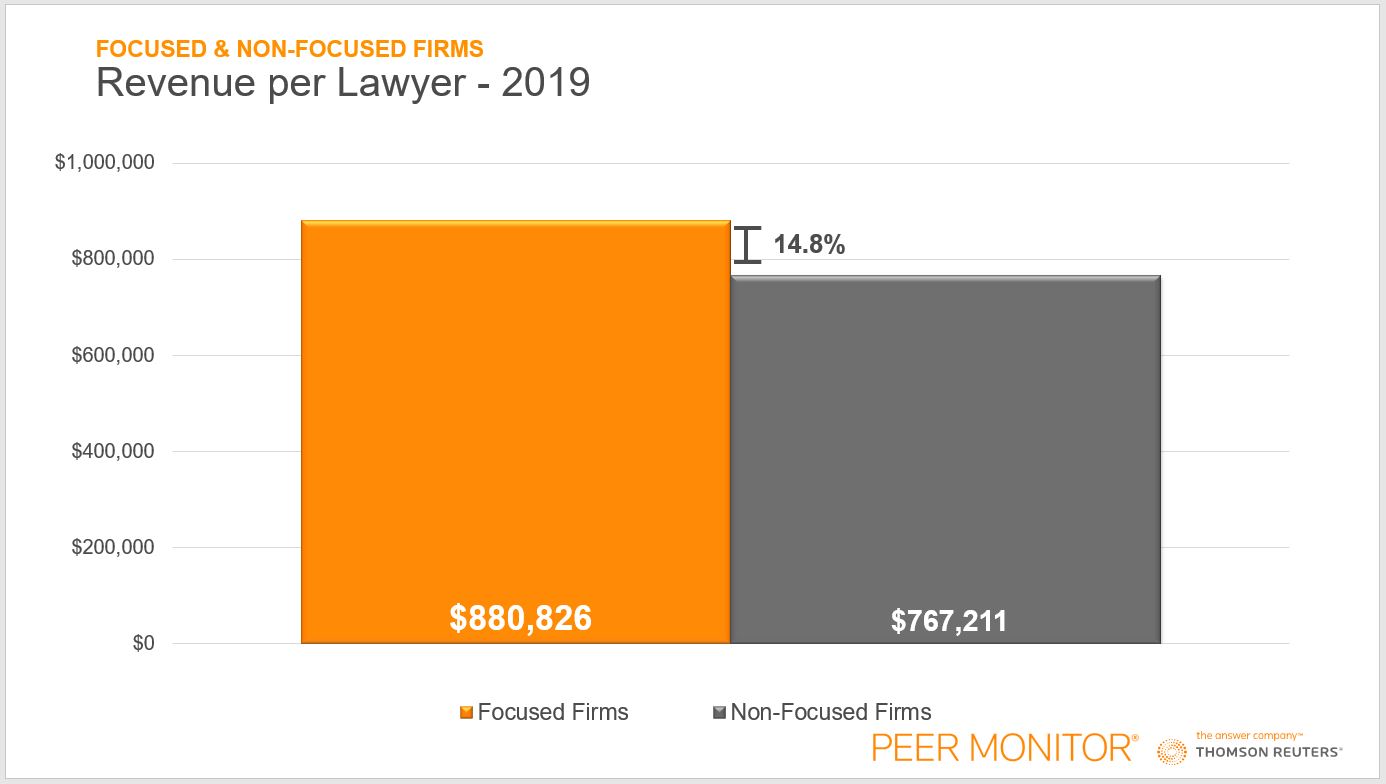
The Middle
Just because a firm is bringing in more revenue on average does not always necessarily mean all that revenue is making its way to the pockets of partners or shareholders. The modern law firm now more than ever is faced with difficult questions on which areas of expenditure are most important to increasing operational efficiency, profitability, and thereby sustainability. This is quite evident when examining increases in both direct expenses, or fee earner compensation, as well as overhead expenses. In fact, both direct and overhead expenses at our Focused Firms are outpacing their less-focused colleagues.
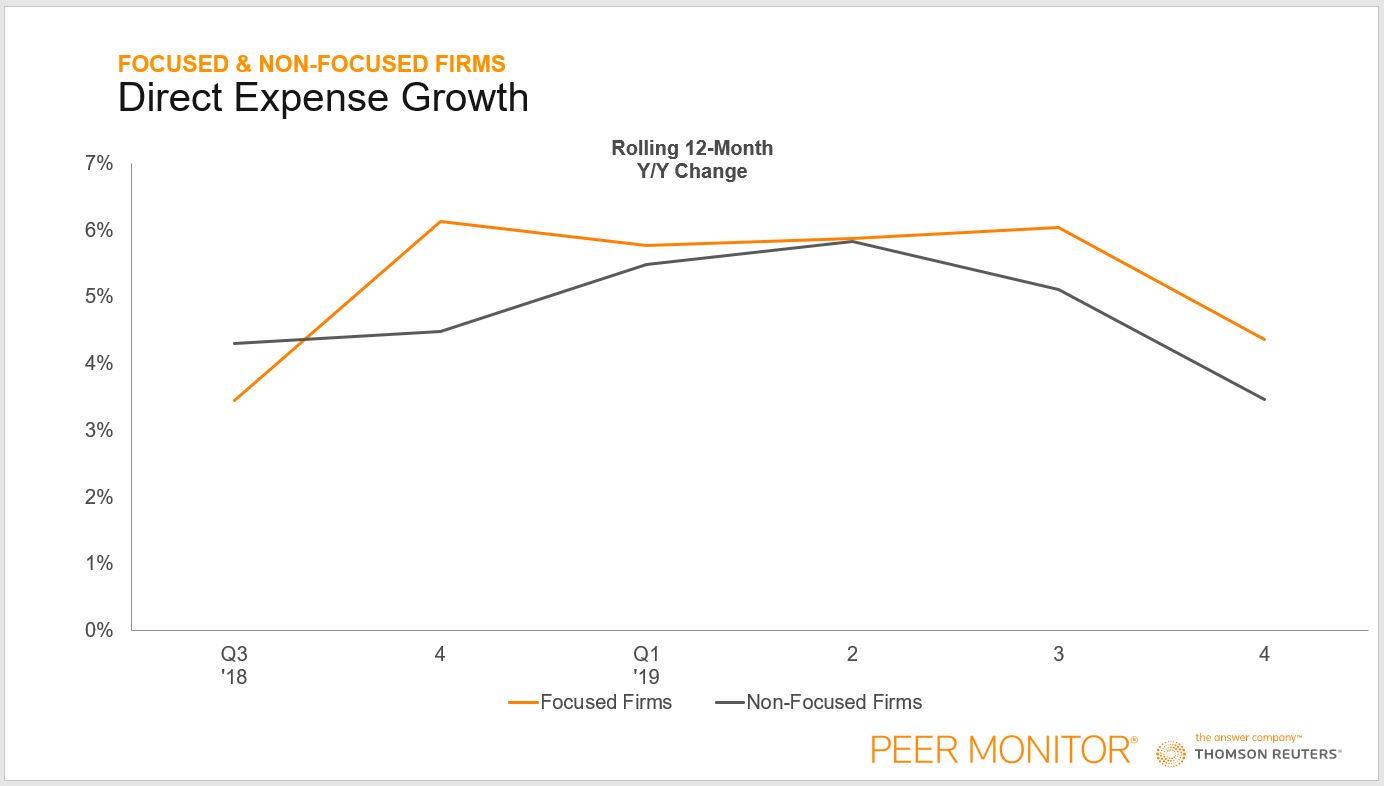
In an interesting takeaway, direct expense growth — more associated as of late with Am Law firms and Associate raises — are higher among our Focused Firms that fall outside of the Am Law 200. This is not new development, with Focused Firms’ rolling-12-month growth percentage surpassing all other firms since the fourth quarter of 2018. This is could be attributed to the need for hyper-specialized lawyers with expertise in more niche areas commanding higher salary. Direct expenses increased in 2019 by 4.4% on average among Focused Firms, almost a whole percentage point more than across all other firms.
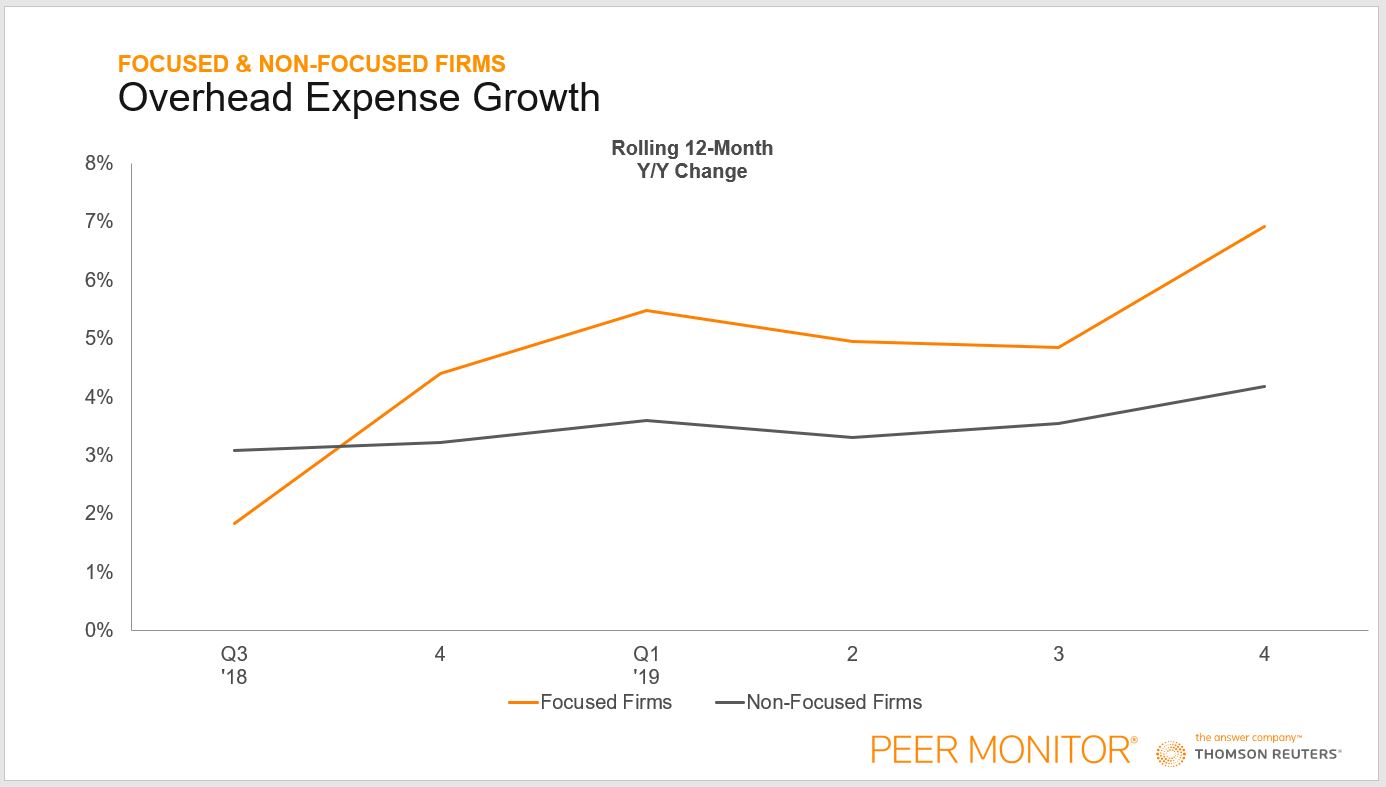
In the case of overhead expenses, Focused Firms have been outpacing their counterparts for more than a calendar year in terms of rolling-12-month growth averages. In fact, overhead growth has only dipped below 5.0% once, and only bottomed out at 4.9%, in the last year among Focused Firms. In contrast, our non-focused firms have only recently surpassed the 4.0% average growth mark, reaching 4.2% growth on average in the fourth quarter. Focused Firms also are notably increasing their recruiting and technology expenses at faster rates than the non-focused group. Further, as a result of the increased levels of growth, occupancy expenses — which constitute 26% of a firm’s overhead expenses on average — increased by 6.7% in 2019 in the Focused Firms group, 5.5% greater than the rate among the non-focused firms.
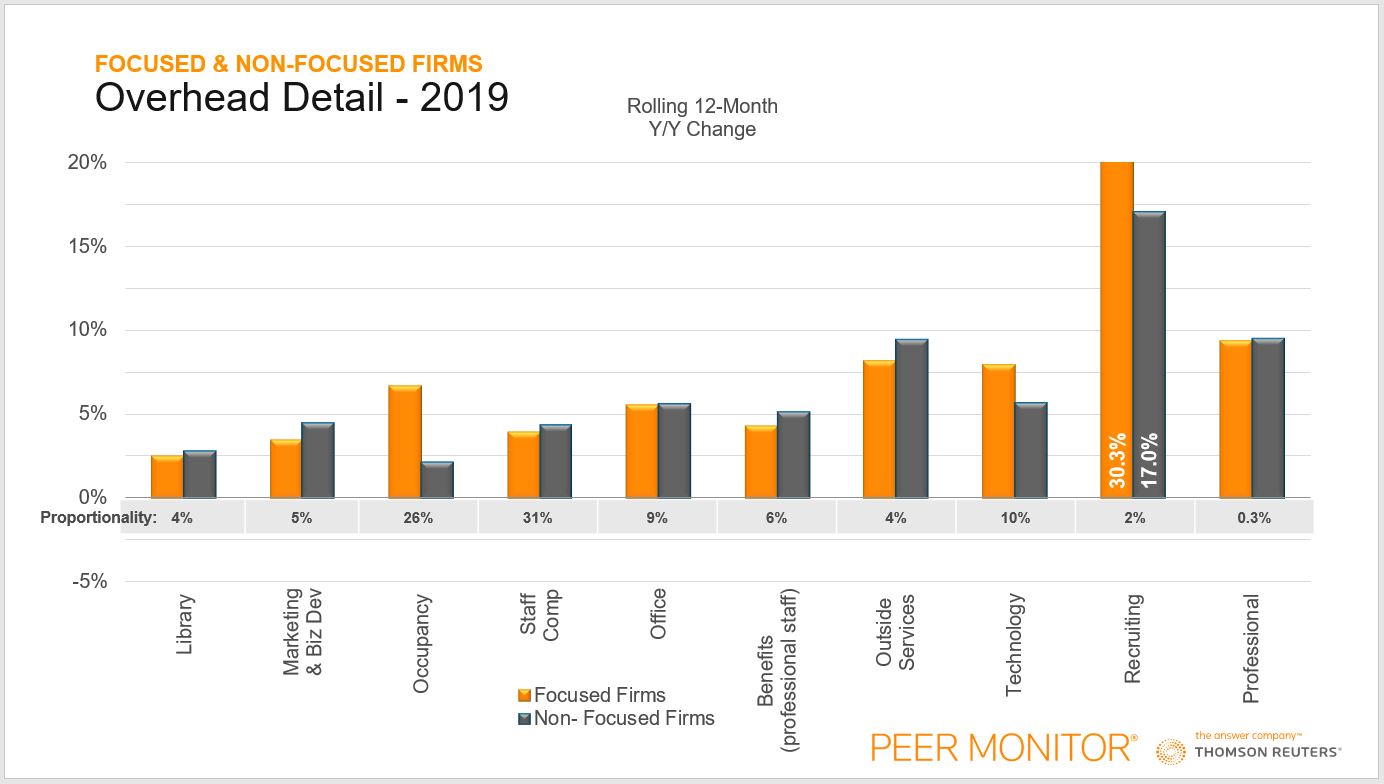
The Bottom Line
In the end, despite the increased levels of expenditure and smaller overall revenue numbers, Focused Firms are on average better able to convert their revenue to take home pay for their equity partners. Profit per equity partner was 24.6%, or $222,723 dollars, higher in our Focused Firm group compared to all other firms.
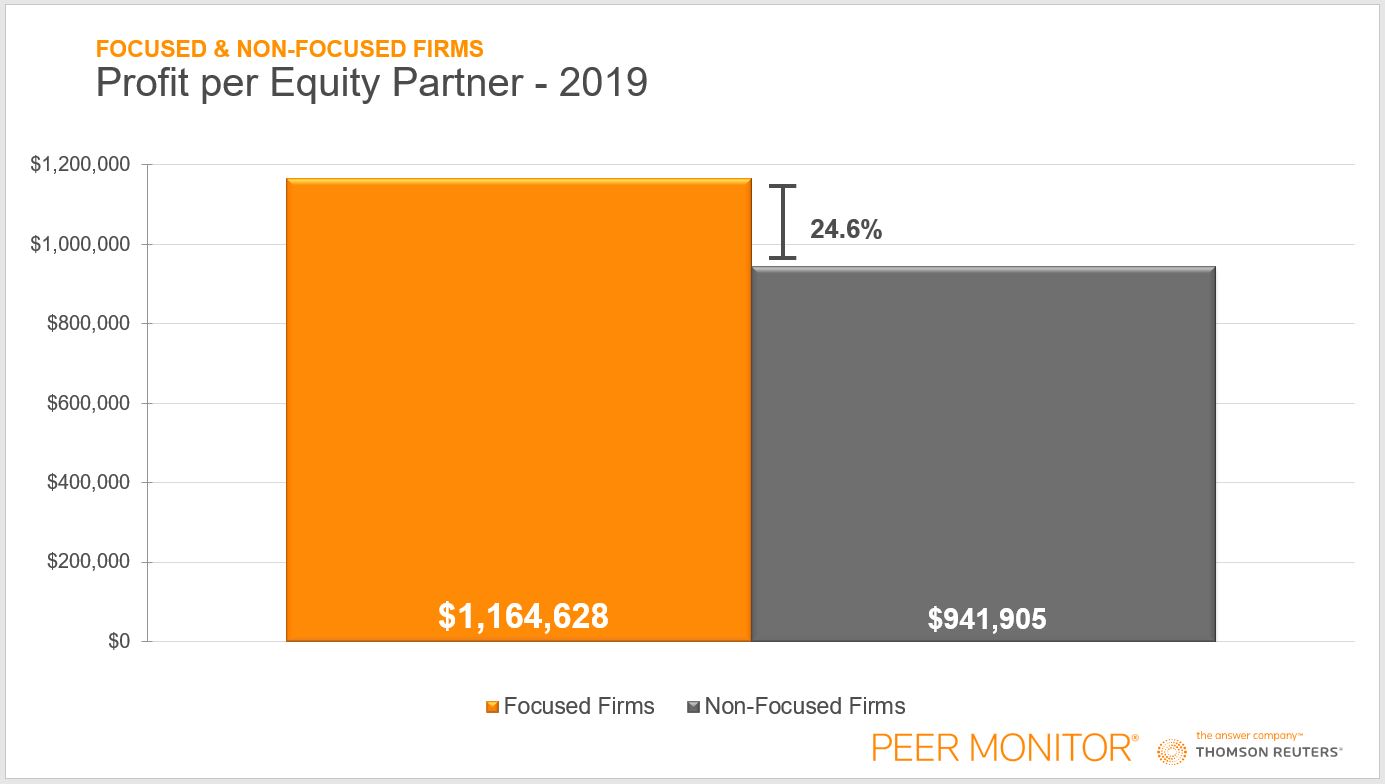
Based on the data from 2019, it appears that clients prefer to work with firms that present themselves as foremost experts and strongly focused in a particular field. It also is apparent that firms with a singular focus benefit from smoother operational efficiency, starting with the productivity levels of their lawyers and moving all the way down to increased amounts of revenue per lawyer and profits per equity partner.
Considering recent world events, it’s clear that now it pays to trim the excess and focus on fewer practice areas that your firm and your lawyers know best instead of trying to be the best in every possible area.






